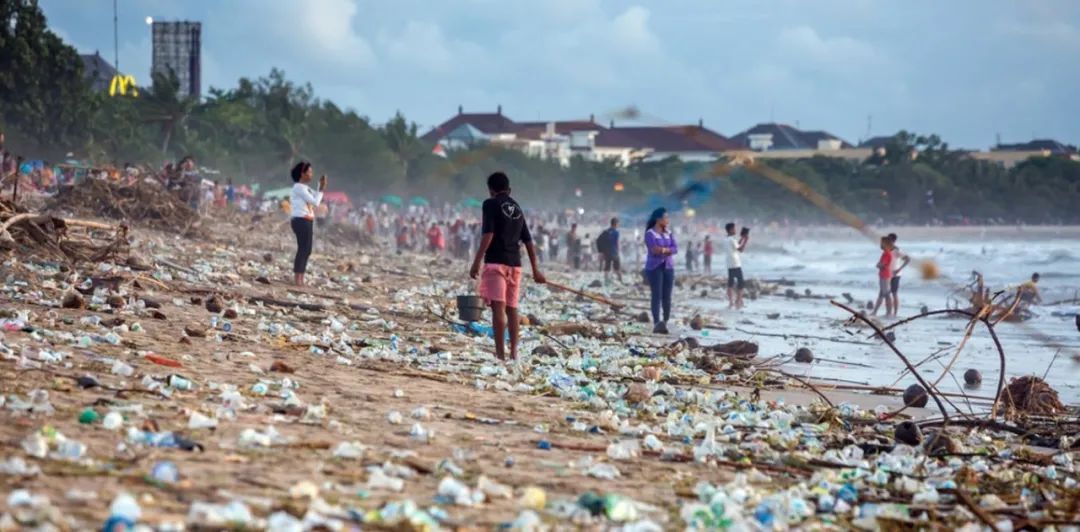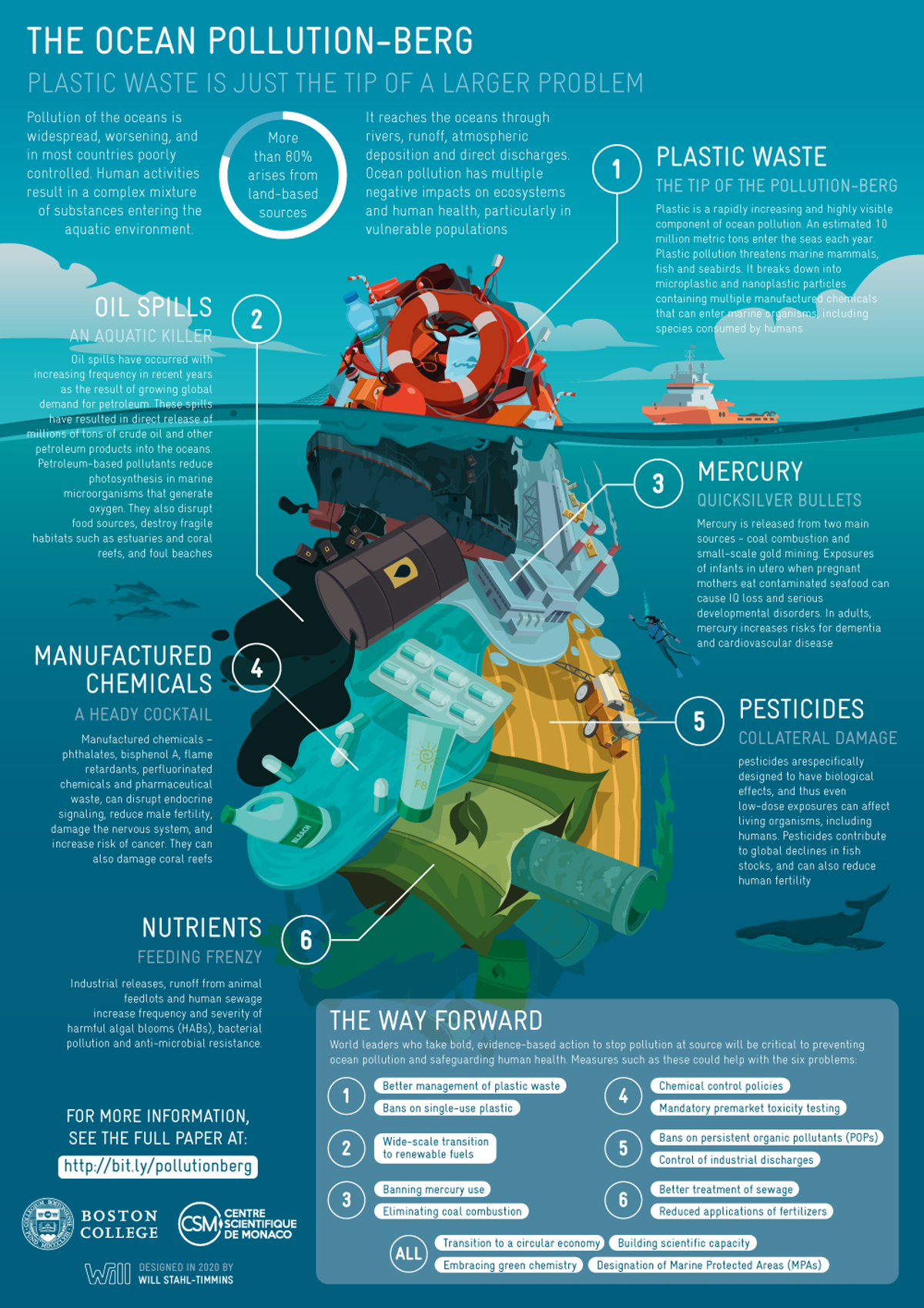How does ocean pollution threaten human health?
Source: The Conversation
Authors: Jacqueline McGlade (Professor, Natural Thriving, Sustainability and Knowledge Systems, UCL),
Philip Landrigan (Professor and Director of the Global Public Health Program and the Global Pollution Observatory, Schiller Institute for Integrative Science and Society, Boston College)
Translation: Global Monitoring

Marine pollution is widespread and worsening, posing a clear and real threat to human health and well-being. But so far, the extent of this danger has not been widely understood. Our recent study provides the first comprehensive assessment of the impact of marine pollution on human health.
Marine pollution comes from a range of complex mixtures including, but not limited to, toxic metals, plastics, industrial chemicals, petroleum, municipal and industrial waste, pesticides, fertilizers, pharmaceutical chemicals, agricultural and municipal sewage. More than 80% of pollutants come from land: some are washed into the ocean by rivers and runoff; rain and snow also bring pollutants in the air into the ocean, which is called "atmospheric deposition"; some are directly dumped into the ocean (eg. pollution from wastewater treatment plants and waste). Marine pollution is most severe in coastal areas and is highly concentrated on the coastlines of low- and middle-income countries.
Marine pollution also occurs in the high seas beyond national jurisdiction, the deepest trenches and the coasts of remote islands.
Marine pollution knows no borders.

Most Dangerous Marine Pollution
Plastic waste is the most visible component of ocean pollution. More than 10 million tons of plastic enter the ocean every year. Much of it breaks down into microplastic particles and accumulates in coastal and deep-sea sediments.
Some large plastic debris floats in the ocean for decades and eventually collects in large numbers where ocean currents converge. The Pacific "garbage patch" is a well-known example.
Microplastics contain a variety of toxic chemicals. They are added to make the plastic flexible, colorful, waterproof or flame retardant. These include carcinogens, neurotoxins, and endocrine disruptors—the latter of which interfere with hormones and can lead to cancer, birth defects and decreased fertility.
These chemical-rich particles enter the food chain and accumulate in fish and shellfish. When humans eat seafood contaminated with it, they ingest millions of microplastic particles and the many chemicals they carry. Although there is still debate about the dangers of microplastics to humans, exposure to these chemicals increases the risk of developing all the diseases they cause. Today, almost everyone has microplastics in their bodies.
Mercury is widely distributed in the oceans, and the culprit is the burning of coal used in homes and industry. All coal contains mercury, which evaporates into the atmosphere when the coal is burned and ends up in the ocean. Another source of mercury is gold mining, as it is used to dissolve gold in ore.
Mercury can accumulate to high levels in predatory fish such as tuna and swordfish. Contaminated fish can be especially dangerous for pregnant women to eat. Mercury can damage the developing brain of babies in the womb, lower their IQ and increase their risk of autism, ADHD and other learning disabilities. Exposure to mercury in adults increases the risk of heart disease and dementia.
Oil pollutants from oil spills threaten the survival of marine microbes by reducing their ability to photosynthesize to produce oxygen. These beneficial microbes, which use the sun to convert atmospheric carbon dioxide into oxygen, are also affected by organic pollutants and other chemicals. When a major oil spill occurs, the impact can be huge.
Coastal pollution from industrial waste, agricultural runoff, pesticides and sewage has increased the frequency of harmful algal blooms, a phenomenon known as red, brown and green tides. These blooms produce strong toxins, such as ciguatoxin and domoic acid, that accumulate in fish and shellfish. Ingestion of these toxins can cause dementia, amnesia, paralysis, and even rapid death; inhalation can cause asthma.
The combined effect of coastal pollution and ocean warming is fueling the spread of dangerous microbes . Harmful bacteria like Vibrio are usually found in warmer waters, but are now gradually migrating north. It causes a life-threatening infection, a potentially fatal disease called vibrosis. In addition, cholera caused by Vibrio cholerae is also likely to spread to new areas that were not previously infected.
Marine pollution has the greatest impact on the health of indigenous peoples, coastal communities and vulnerable populations in the global South, underscoring this global environmental injustice.
Political Will and Scientific Evidence
While the findings in this report are worrying, the good news is that ocean pollution, like all forms of pollution, can be controlled and prevented. Bans on single-use plastics and better waste sorting can curb pollution at source, especially for plastic waste on land and at sea.
Wise governments curb other forms of pollution through control strategies based on law, policy, technology and targeted enforcement. For example, the United States has reduced air pollution by 70 percent since the passage of the Clean Air Act in 1970.
Thousands of lives have been saved as a result. This has proven to be a cost-effective strategy.
Countries around the world are applying the same tools to control marine pollution. Boston Harbor in Massachusetts and Victoria Harbor in Hong Kong have been cleaned up. Estuaries have been rejuvenated, from the Chesapeake Bay in the United States to the Seto Inland Sea in Japan. Some coral reefs have also recovered, such as those in American Samoa, where vigilance, protection and rapid response to various pollution threats have been implemented.
These successes boosted the economy, increased tourism, restored fisheries, and improved health. This suggests that widespread control of marine pollution is feasible, with benefits that will last for centuries. Our research provides some clear recommendations for preventing and controlling marine pollution, including transitioning to cleaner energy sources, developing alternatives to plastics made from fossil fuels, reducing human, agricultural and industrial emissions, and expanding marine protected areas.
Protecting the planet is a global concern and our collective responsibility. Recognizing the seriousness of ocean pollution, acknowledging its growing dangers, engaging civil society, and taking bold, evidence-based action to stop pollution at its source are critical to both preventing ocean pollution and safeguarding our own health.
Like my work? Don't forget to support and clap, let me know that you are with me on the road of creation. Keep this enthusiasm together!

- Author
- More